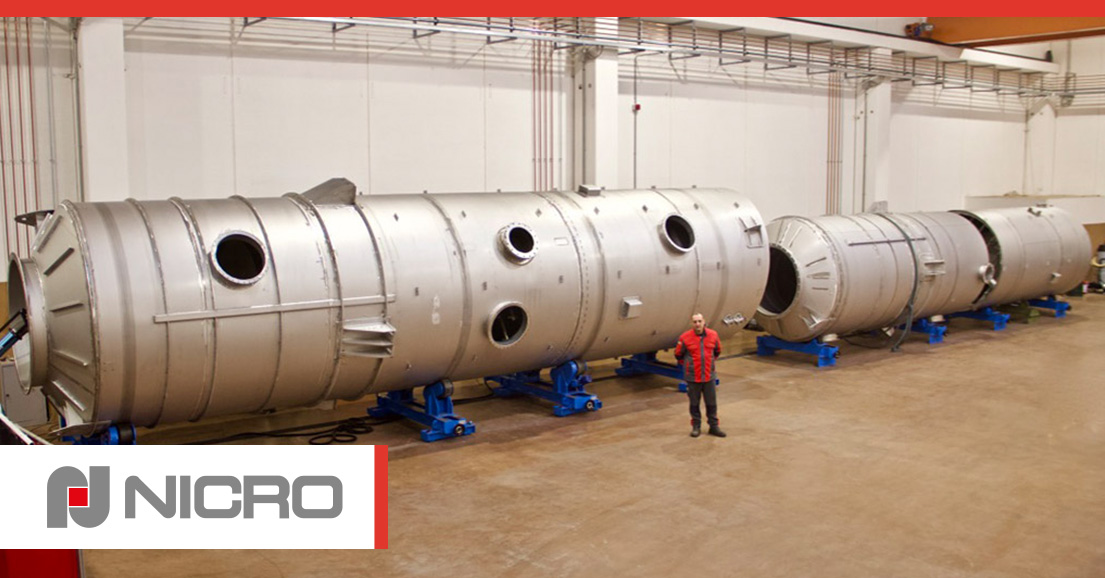Naval scrubbers: what they are and how they work

The scrubber is a critical component of a ship’s engine exhaust cleaning system. This is a particular separator filter also known as a “washing tower” which reduces the concentration of acidic micro-pollutants such as nitrogen oxides, sulfur and chlorinated gases produced by combustion.
In the naval sector, the scrubber became necessary after the introduction of the new amendments to the Marpol law 73/78 (the International Convention for the prevention of sea pollution). From 1 January 2020, in particular, the use of fuels with a sulfur content higher than 0.5% has been banned on a global scale.
While the problem does not arise on new builds, because engines using low-sulfur fuels such as liquefied natural gas (LNG) are available, scrubbers are nevertheless an ideal solution for existing ships. In fact, they are able to intercept a very large number of molecules, including sulfur molecules, and can be installed with costs ranging from 2 to 5 million euros, with economic savings compared to the use of LNG, which remains an expensive fuel. .
Nicro has been involved in the production of scrubbers since 2014, when it expanded the sectors of its competence to the marine and naval one. An almost obligatory choice, for a company that has always been devoted to sustainability, above all the environmental one, for which Nicro was more than ready to put all its multisectoral skills and abilities into play.
Ship scrubbers: how many types are there?
There are two types of scrubbers, distinguished on the basis of the reagents used to remove sulfur emissions: dry scrubbers use granulated hydrated solid lime. The gas is not cooled with water, so they can be positioned before an EGE (exhaust gas economizer) or used with units for the abatement of nitrogen oxides NOx (the so-called SCR, Selective catalytic reduction), which require temperatures of the gas above 350 ° C to operate.
In wet scrubbers, on the other hand, the gases are dissolved in water and are further distinguished between those in closed circuit, in which sea water or fresh water treated with sodium hydroxide is used as washing liquid, which remains separate and it does not mix with the external one, and in an open circuit, in which sea water is consumed instead pumped from the outside for washing.
Ship scrubbers: how they work
The gases are introduced together with the powder or liquid scrubber, sprayed from above or at different heights of the column, inside a tube with a restriction, called Venturi tube. The narrowing increases the crossing speed and creates turbulence in the flow which improves the mixing between the acid gases to be restored and the alkaline scrubber, which at this point absorbs the components to be eliminated.
The base of the tube is connected to a demixing chamber, which imposes a spiral motion from the bottom up to the mixture. Thanks to the material it is filled with, it condenses the liquid on the bottom and makes the gases rise to the top of the column, where they are sucked in by a blower. Depending on the type of application, an additional washing liquid or other chemical products can be introduced in the middle of this chamber to separate any condensed hydrocarbons.
At this point, the clean exhaust is re-released into the atmosphere, while the exhausted washing material, together with impurities, sludge and washing water, is stored or disposed of immediately as effluent for treatment according to the guidelines of the ‘IMO.
Nicro has dedicated an entire production area to the creation of scrubbers for the naval sector, in which it has had a great expansion in recent years. Thanks to its expertise in the steel, chemical and energy-environmental sectors, Nicro is an expert in the production of highly alloyed refractory steels, and owns cutting-edge machinery such as 3D cutting lasers, robotic welders and plasma welders. This allows it to tackle very large projects, and above all tailored to the needs of customers.
If you are interested in this or other Nicro projects, or are considering a possible collaboration in one of the many sectors, ask us for information using the appropriate form, or by calling us or sending us an email. You will be contacted by our experts who will be able to advise and guide you with their highly specialized advice.
